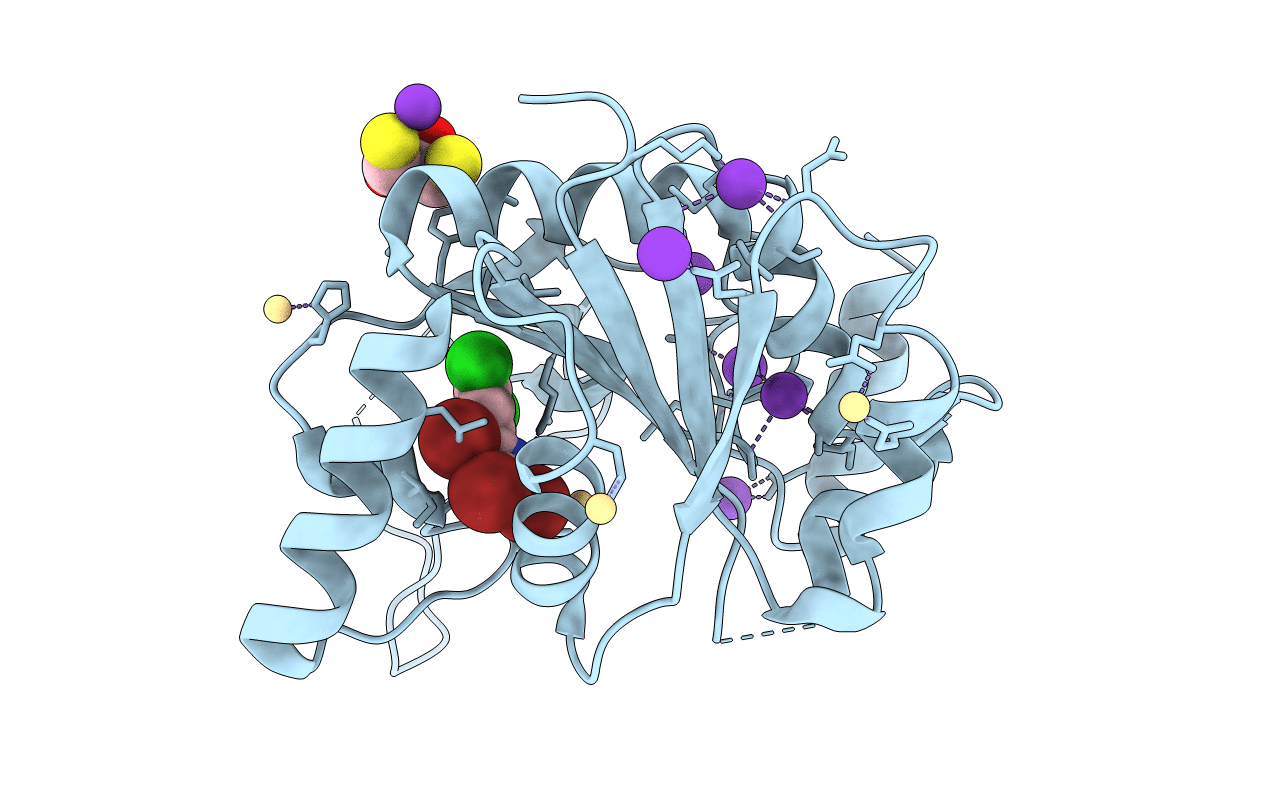
Deposition Date
2013-10-22
Release Date
2014-01-29
Last Version Date
2023-09-20
Entry Detail
PDB ID:
4NAL
Keywords:
Title:
Arabidopsis thaliana IspD in complex with tribromodichloro-pseudilin
Biological Source:
Source Organism:
Arabidopsis thaliana (Taxon ID: 3702)
Host Organism:
Method Details:
Experimental Method:
Resolution:
1.80 Å
R-Value Free:
0.24
R-Value Work:
0.20
R-Value Observed:
0.20
Space Group:
H 3 2


